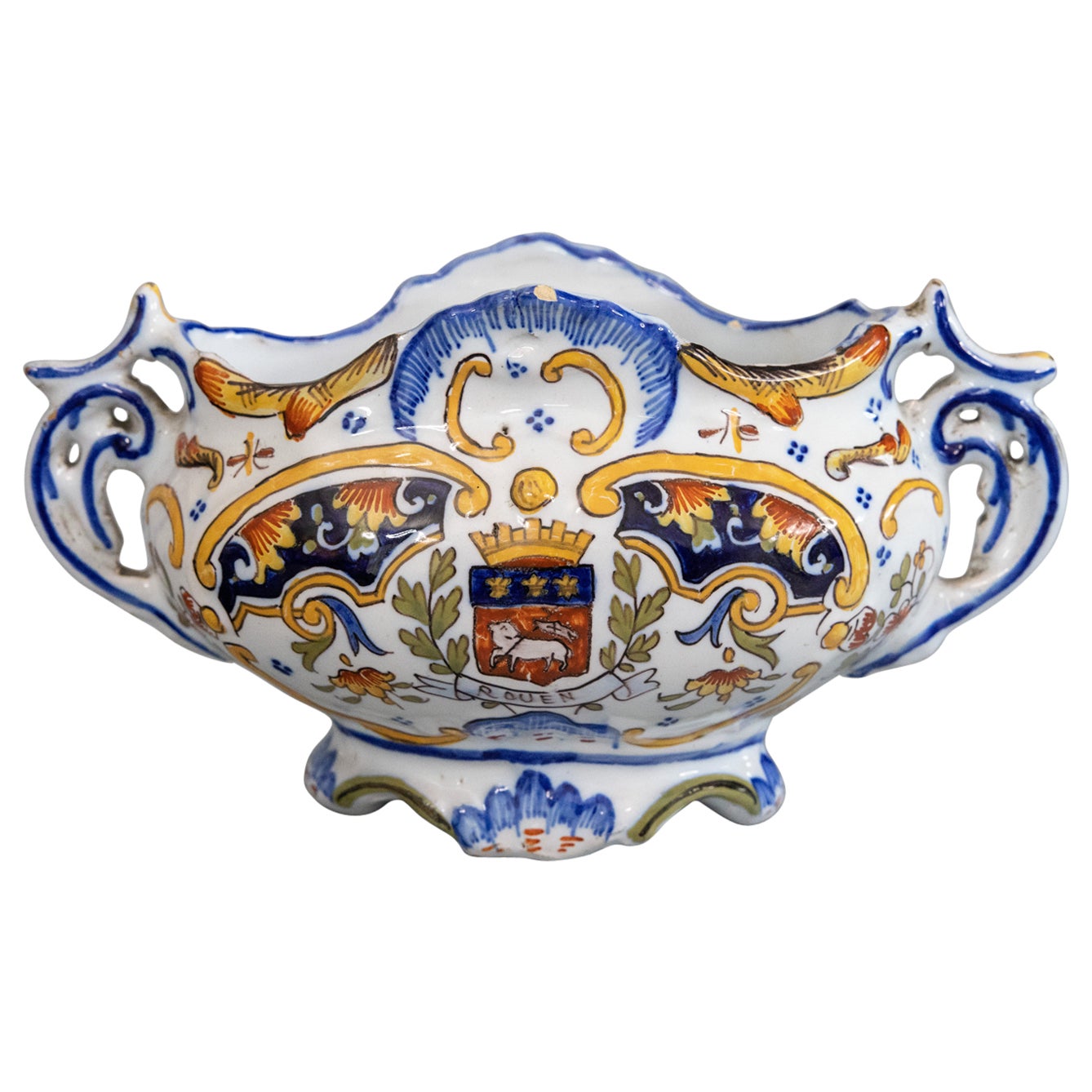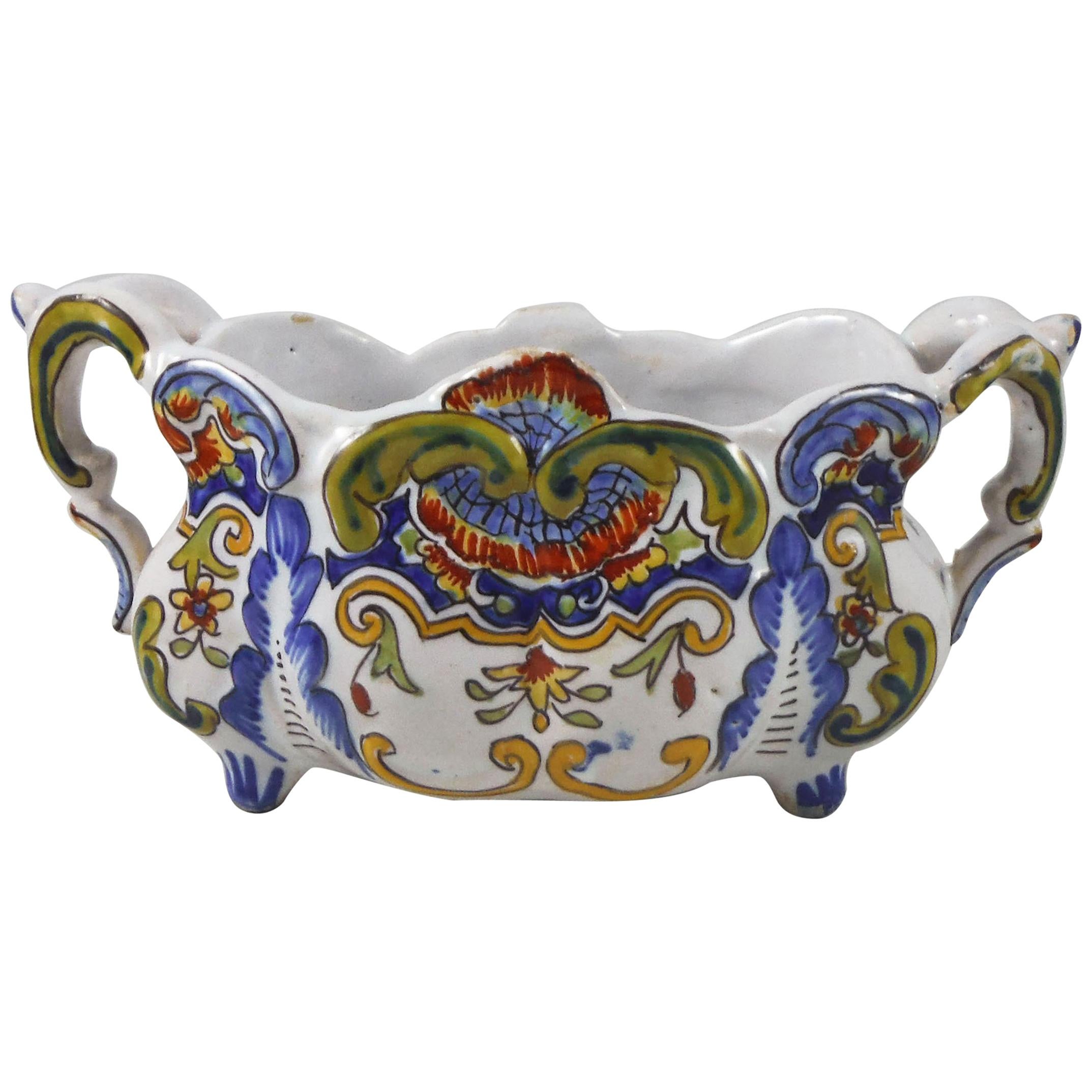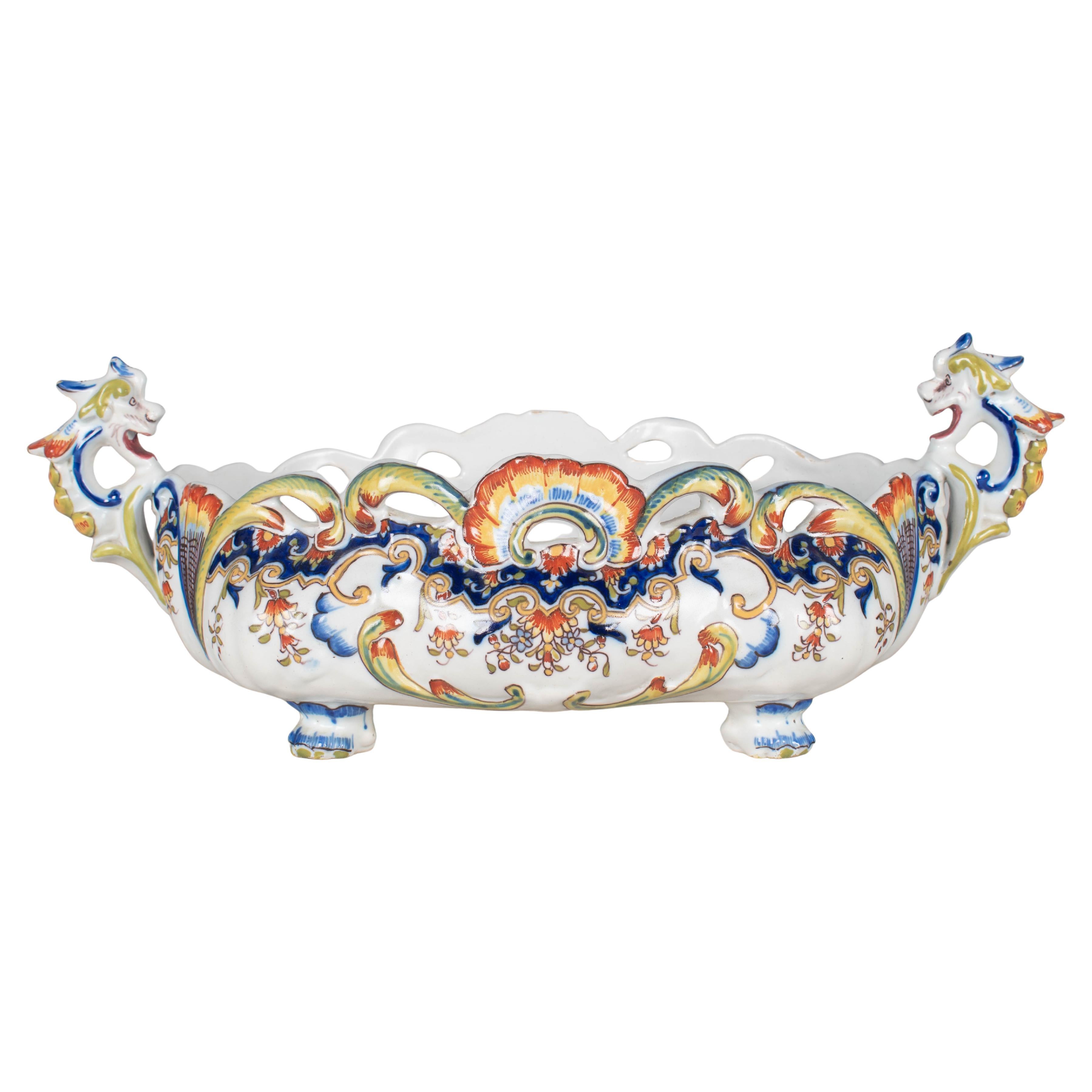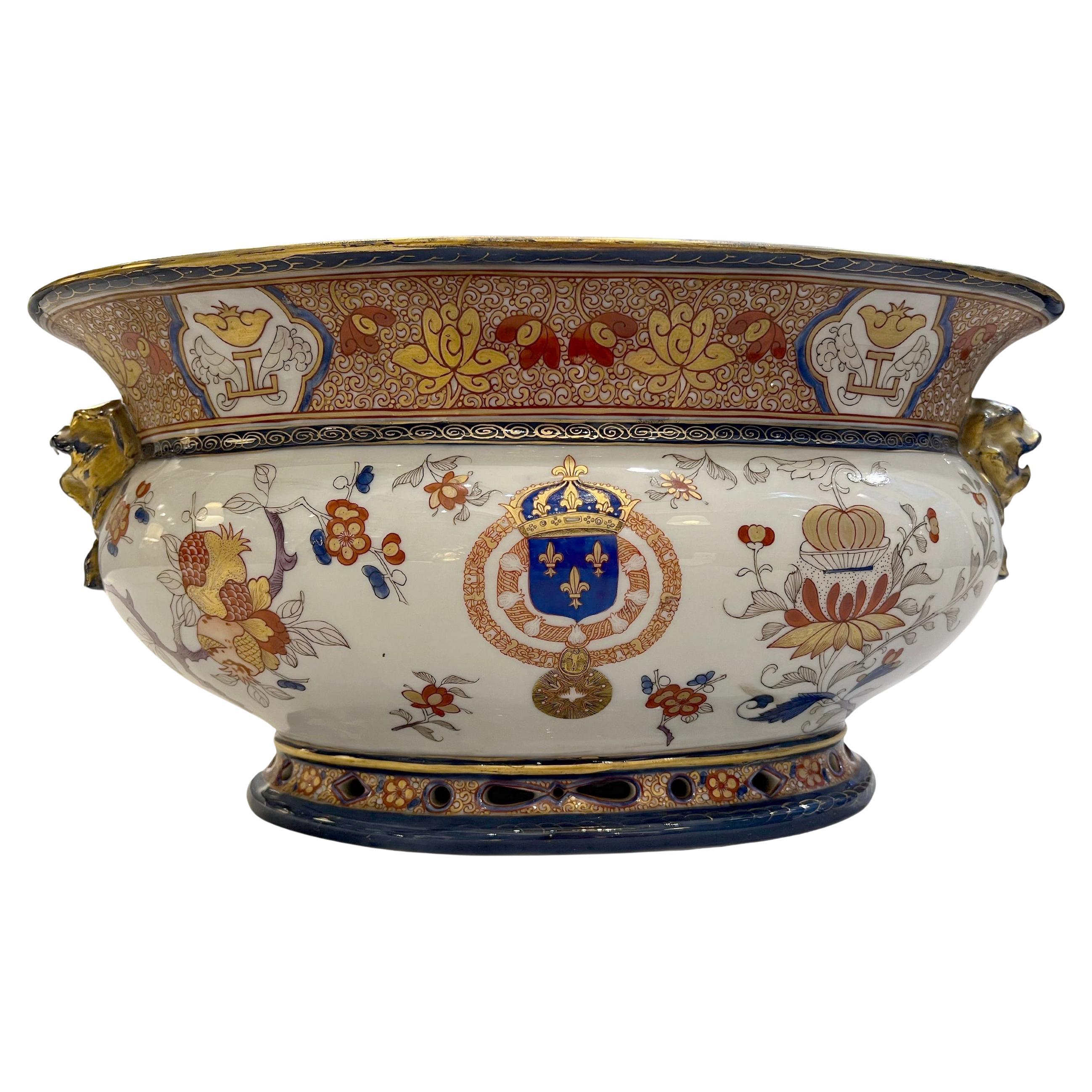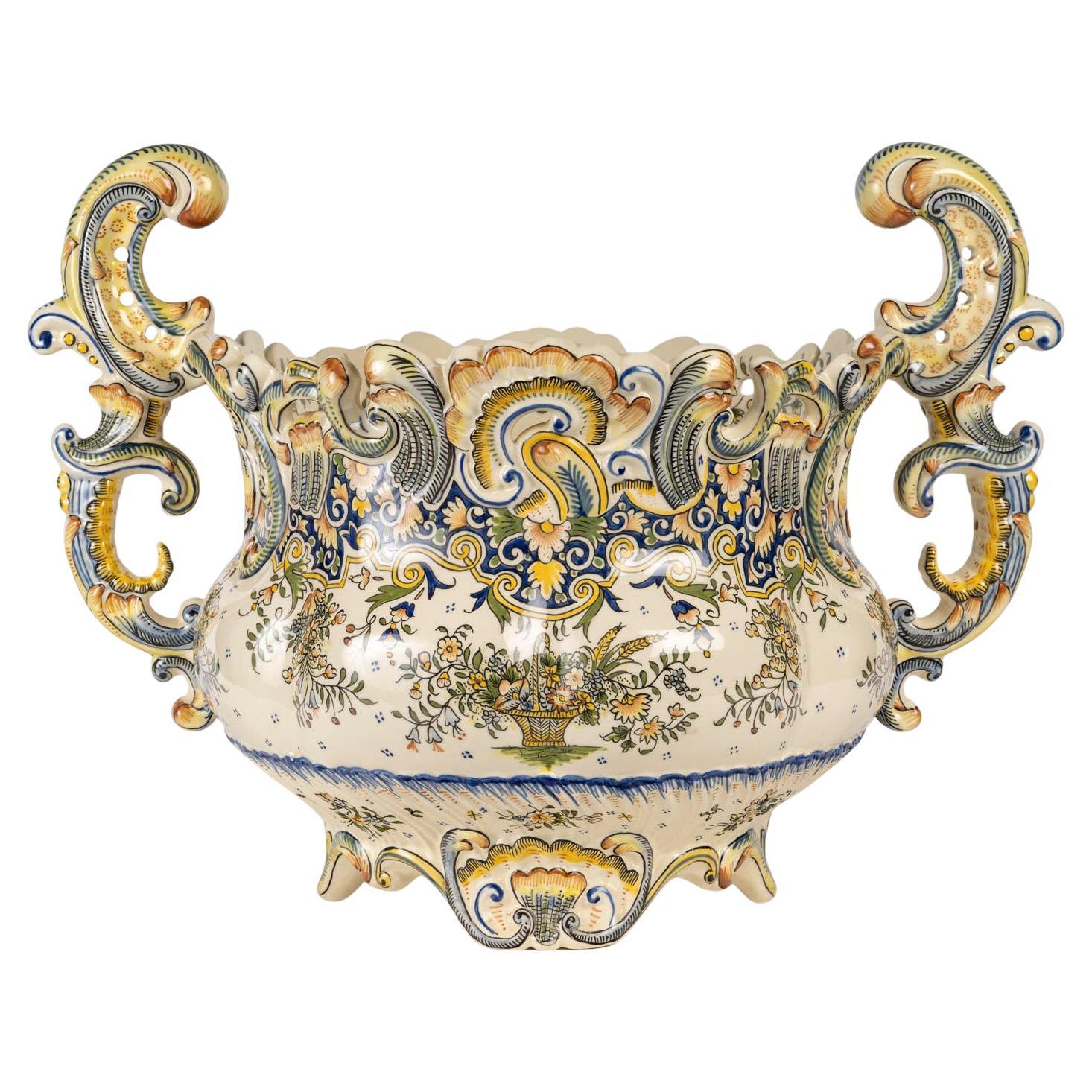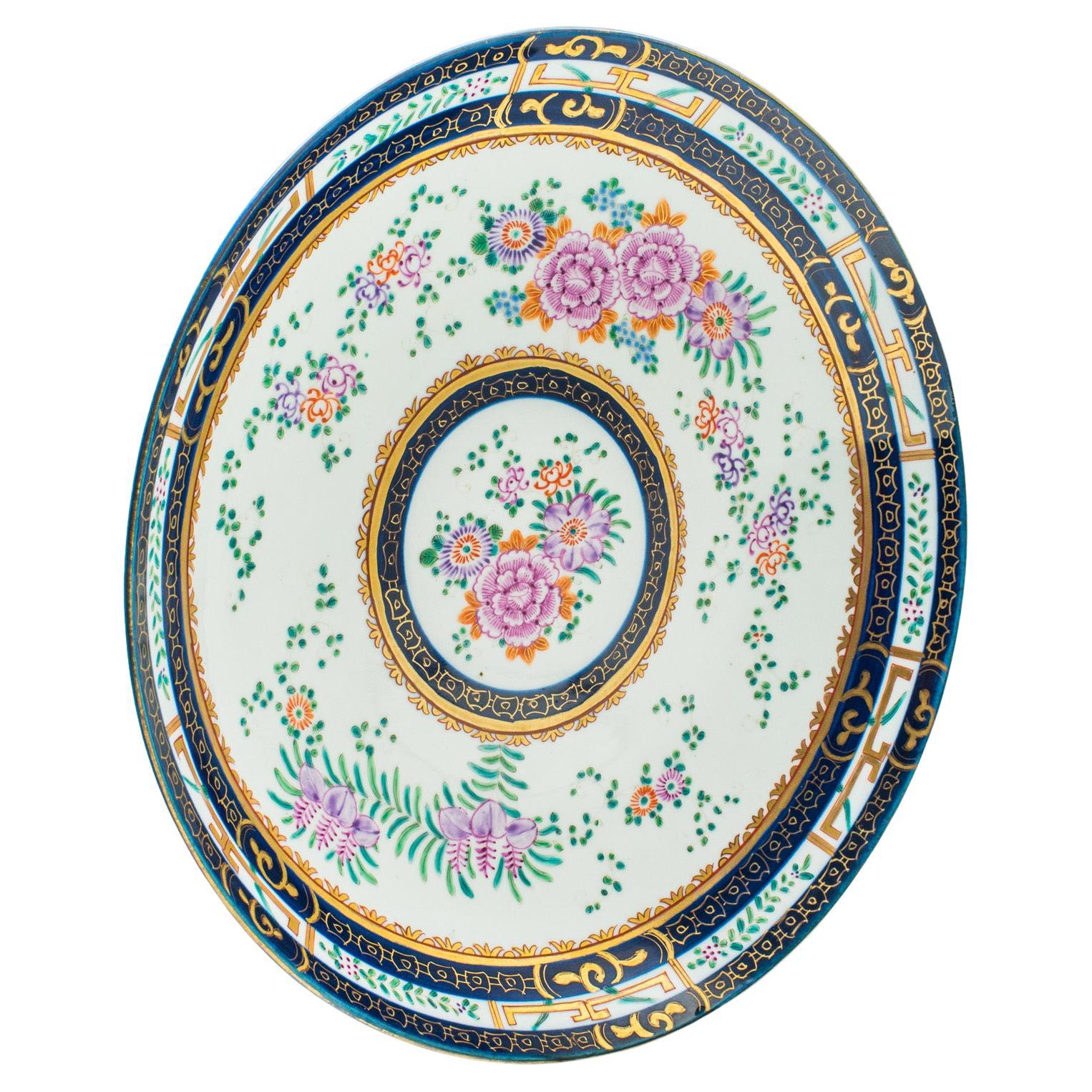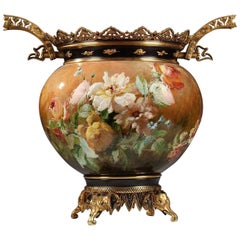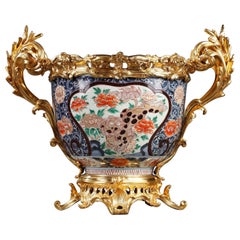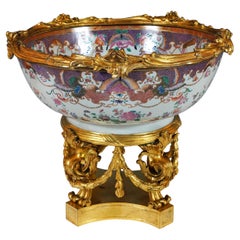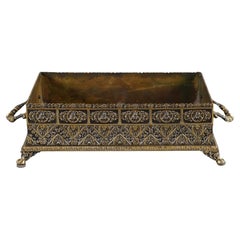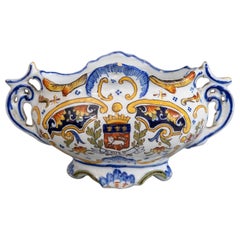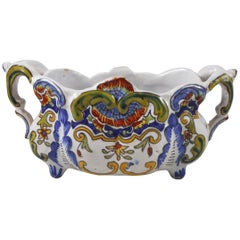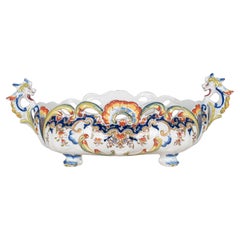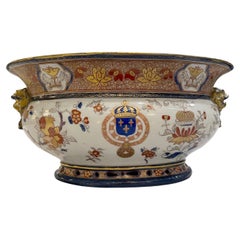Items Similar to Planter and Decorative Dish Attributed to Samson & Cie, France, Circa 1880
Want more images or videos?
Request additional images or videos from the seller
1 of 10
Planter and Decorative Dish Attributed to Samson & Cie, France, Circa 1880
$16,095.85per set
£11,924.61per set
€13,500per set
CA$22,050.51per set
A$24,466.90per set
CHF 12,816.29per set
MX$300,029.87per set
NOK 163,018.77per set
SEK 153,882.77per set
DKK 102,691.53per set
Shipping
Retrieving quote...The 1stDibs Promise:
Authenticity Guarantee,
Money-Back Guarantee,
24-Hour Cancellation
About the Item
Important porcelain planter and decorative dish attributed to Samson & Cie.
They are decorated with golden and red friezes of intertwined lotus, fruits and flower cups, fans and two "L" fused cartouches supporting a flower.
Both are decorated with French coat of arms, placed in two chevalry order necklaces : the order of the Holy Spirit and the order of Saint Michael, a gold necklace with shells to which is suspended a medallion representing the archangel slaying the dragon.
Measures: Planter – Height 32 cm (12.5 in.), diameter 37 cm (14.5 in.)
Dish – Diameter 64.5 cm (25,3 in.) ; depth 7 cm (2.7 in.)
Edmé Samson (1810-1891), painter on ceramics established 1845 at n°7 rue in Paris, bought his white porcelain pieces, in other words undecorated porcelains from various Paris manufactures. His son, Emile (1837-1913) who succeeded him, began to make reproductions from older models. Exhibiting at the 1863 Exposition of the Fine Arts applied to Industry, Emile Samson became particularly noted for his porcelain works imitating the "Old Japan" ones. He installed in 1864 a factory in Montreuil-sous-Bois, nearby Paris and enjoyed great success at the Paris International Exhibition of 1867 with their imitations of Saxony, China and Japan porcelain pieces, all considered of very Fine quality. At the 1889 Universal Exhibition, Samson & Cie was deemed to be specialized in large size pieces, made either in porcelain or earthenware, whose models were chosen from the most wellknown museums, such as the Louvre Museum in Paris and the Victoria & Albert Museum in London. In 1891, Emile went into partnership with his son Léon (1868-1928), under the name Samson & Son, who gave a major extension to the factory, employing a large number of workers and decorators. In addition to the manufacturing of porcelain, they also made their own bronze decorative mounts used on the pieces.
- Attributed to:Samson & Cie (Maker)
- Dimensions:Height: 12.6 in (32 cm)Diameter: 14.57 in (37 cm)
- Sold As:Set of 2
- Materials and Techniques:
- Place of Origin:
- Period:
- Date of Manufacture:circa 1880
- Condition:Wear consistent with age and use.
- Seller Location:PARIS, FR
- Reference Number:Seller: 1696/2 and 1696/31stDibs: LU3860316276871
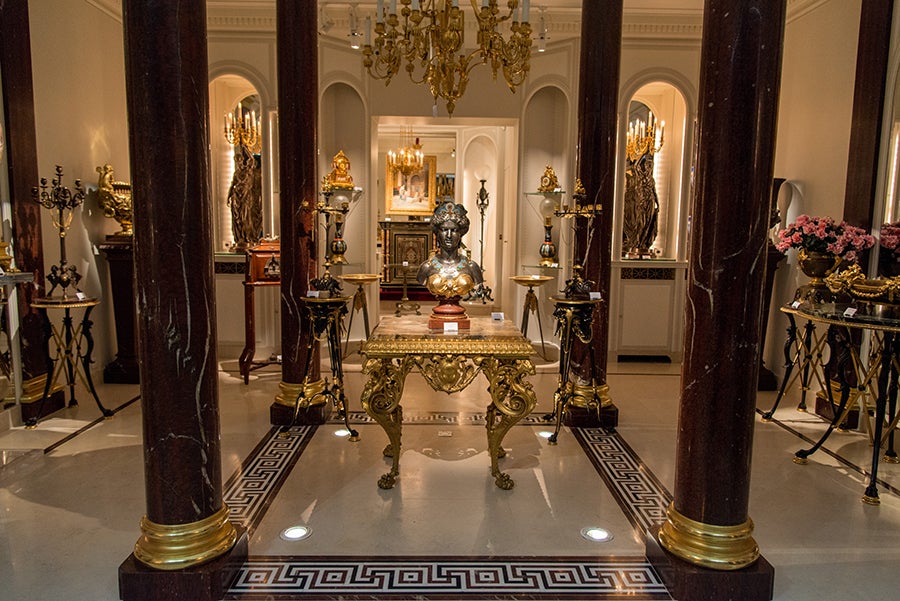
About the Seller
4.9
Vetted Professional Seller
Every seller passes strict standards for authenticity and reliability
Established in 1997
1stDibs seller since 2018
87 sales on 1stDibs
Typical response time: 2 hours
Associations
International Confederation of Art and Antique Dealers' Associations
- ShippingRetrieving quote...Shipping from: PARIS, France
- Return Policy
Authenticity Guarantee
In the unlikely event there’s an issue with an item’s authenticity, contact us within 1 year for a full refund. DetailsMoney-Back Guarantee
If your item is not as described, is damaged in transit, or does not arrive, contact us within 7 days for a full refund. Details24-Hour Cancellation
You have a 24-hour grace period in which to reconsider your purchase, with no questions asked.Vetted Professional Sellers
Our world-class sellers must adhere to strict standards for service and quality, maintaining the integrity of our listings.Price-Match Guarantee
If you find that a seller listed the same item for a lower price elsewhere, we’ll match it.Trusted Global Delivery
Our best-in-class carrier network provides specialized shipping options worldwide, including custom delivery.More From This Seller
View AllEarthenware Planter attr. to F. Barbedienne, France, Circa 1880
By Ferdinand Barbedienne
Located in PARIS, FR
Marked M.s.L. et G.S.
Planter in earthenware of Montigny-sur-Loing decorated with painted flowers (so-called "à la barbotine") inserted in a blanc and gilded bronze mount, attrib...
Category
Antique 1880s French Planters, Cachepots and Jardinières
Materials
Bronze
Large Imari Porcelain Planter, France, Circa 1880
Located in PARIS, FR
Japanese porcelain and French gilded bronze mount.
Important Imari Porcelain planter with a polychrome and golden decoration of cranes, carp and lion, on a blue vermiculated backgro...
Category
Antique 1880s French Louis XV Planters, Cachepots and Jardinières
Materials
Bronze
Porcelain Bowl, Compagnie des Indes, France (mount) - China, 18th/19th Century
Located in PARIS, FR
China 18th Century (bowl) – France 19th Century (mount)
Beautiful enameled porcelain bowl in the pink-purple tones characteristic of the “Famille Rose” with polychrome decoration o...
Category
Antique 19th Century French Chinese Export Decorative Bowls
Materials
Bronze
Orientalist Style Planter, France, Circa 1870
Located in PARIS, FR
Elegant Orientalist style rectangular planter in patinated and gilded bronze, resting on four lion paws. It is adorned with decorative friezes of water leaves, stylized floral medall...
Category
Antique 1870s French Neoclassical Revival Planters, Cachepots and Jardin...
Materials
Bronze
Paris Porcelain Pair of Vases "The Flowering", France, Circa 1880
By Porcelaine de Paris
Located in PARIS, FR
Beautiful pair of white porcelain vases richly decorated with beautiful polychrome floral compositions and butterflies enhanced with gold on a blue background, framed by golden porce...
Category
Antique 1880s French Napoleon III Vases
Materials
Porcelain
Elegant Pair of Japanese Style Dishes, France, Circa 1875
Located in PARIS, FR
Pair of 18th century soft-paste porcelain dishes finely decorated in the 19th century with medallions representing Japanese theatre characters dressed in traditional costumes, beautiful gold-embossed ornament on a polychrome background.
These dishes are to be linked with the production of the Sèvres Manufacture.
The Manufacture de Sèvres, factory of soft-paste porcelain, was founded in 1738 at Vincennes by bankers and financiers hoping to discover the secret of making hard-paste porcelain, used in Meissen at the time. In 1753, King of France Louis XV became the main shareholder of the factory, transferring it to Sèvres, closer to Versailles and the castle of Bellevue, owned by la Marquise de Pompadour, very interested by Sèvres’ research and supportive of the works. In 1759, the King became the sole shareholder of the Manufacture, making it the property of the French Crown. From this day on, the Sèvres artworks were marked with the royal seal, two intertwined “L’s”, as well as a letter indicating the year of creation. The period between 1756 and 1779 represents the most prosperous years for the factory. To support Sèvres, Louis XV made sumptuous orders offered as diplomatic presents. The main artists at the time, such as painters Boucher and Bachelier or sculptors Falconet and Boizot, worked for the factory. Research on the making of hard-paste porcelain kept going and succeeded after 1769. From this year, Sèvres successfully produced both soft-paste and hard-paste porcelain. It is also during this period that the most beautiful and singular colors were invented: bleu lapis in 1752, bleu celeste in 1753, green in 1756, famous pink in 1757 and royal blue in 1763. The most significant pieces are ornamented with scenes inspired by engravings from famous painters (Boucher) and ornamentalists. They are also decorated with garlands, bunches of flowers, trophies, gildings… The fine quality of Sèvres’ production covers a large range of statuettes (Falconet’s threatening Love), full services (Rambouillet’s service is presented to Marie-Antoinette in 1788), as well as utilitarian or ornamental items. The role played by haberdashers in the production’s development is essential. They originated trends around Sèvres-designed products, such as Daguerre who decorated his most precious furniture with porcelain...
Category
Antique 1870s French Porcelain
Materials
Porcelain
$5,246 Sale Price / set
63% Off
Free Shipping
You May Also Like
Antique French Rouen Faience Jardiniere Cachepot, circa 1900
By Rouen
Located in Pearland, TX
A lovely antique petite French faience hand painted jardiniere / cachepot / planter from Rouen, France, circa 1900. Maker's mark on reverse. It would be gorgeous added to a collectio...
Category
Antique Early 1900s French Planters, Cachepots and Jardinières
Materials
Faience
French Faience Jardiniere Desvres, circa 1900
By Desvres
Located in Austin, TX
French Desvres faience jardinière painted with flowers, circa 1900. Marked on base.
Minor wear.
Category
Antique Early 1900s French French Provincial Planters, Cachepots and Jar...
Materials
Faience
French Desvres Faience Jardinière or Cachepot
By Desvres
Located in Winter Park, FL
A 19th century French Desvres faience jardinière, or cache pot. Hand-painted in typical floral design with beautiful vivid colors of blue, green, yellow and red on white ground. A ni...
Category
Early 20th Century French Beaux Arts Planters, Cachepots and Jardinières
Materials
Faience
Jardiniere with the royal coat of arms of France, Paris, France circa 1880
By Samson & Cie
Located in Paris, FR
Refresher stand or jardinière with the royal coat of arms of France.
In porcelain in the spirit of the Compagnie des Indes, oval with two chimera-shaped handles, with polychrome and ...
Category
Antique Late 19th Century French Planters, Cachepots and Jardinières
Materials
Porcelain
Porcelain Plant Pot from Desvres, 20th Century, Napoleon III Style.
By Desvres
Located in Saint-Ouen, FR
Porcelain plant pot from Desvres, 20th century, Napoleon III style.
Porcelain plant pot from Desvres in the Napoleon III style, 20th century.
H: 45 cm, W: 59 cm, D: 39 cm
Category
20th Century French Napoleon III Planters, Cachepots and Jardinières
Materials
Porcelain
Antique Deep Display Charger, French, Ceramic, Decorative Plate, Victorian, 1900
Located in Hele, Devon, GB
This is an antique deep display charger. A French, ceramic decorative plate, dating to the late Victorian period, circa 1900.
Fascinating profile with a generous size and lovely Fa...
Category
Antique Late 19th Century French Late Victorian Ceramics
Materials
Ceramic
More Ways To Browse
Antique Porcelain Planter
Victoria And Son
Antique White Planter
Japanese Antique Planter
Large Porcelain Planter
Large Chinese Planter
French Porcelain Planter
Paris Jardiniere
Samson French
Old Antique Fans
Antique Samson Porcelain
Bronze Dragon Vase
Chinese Flower Planters
Large Porcelain Jardiniere
Large Japanese Bronze Vase
Antique Chinese Porcelain Planters
Jardinieres Bronze Mount
Japanese Bronze Flower Vase
